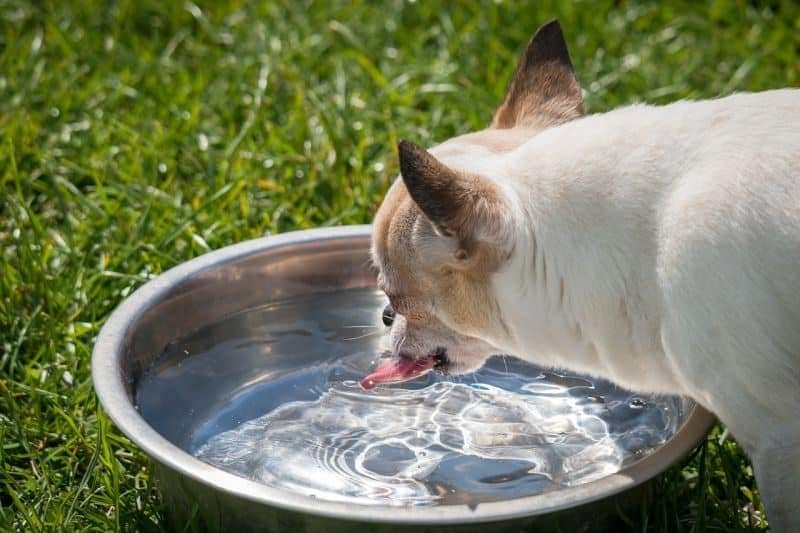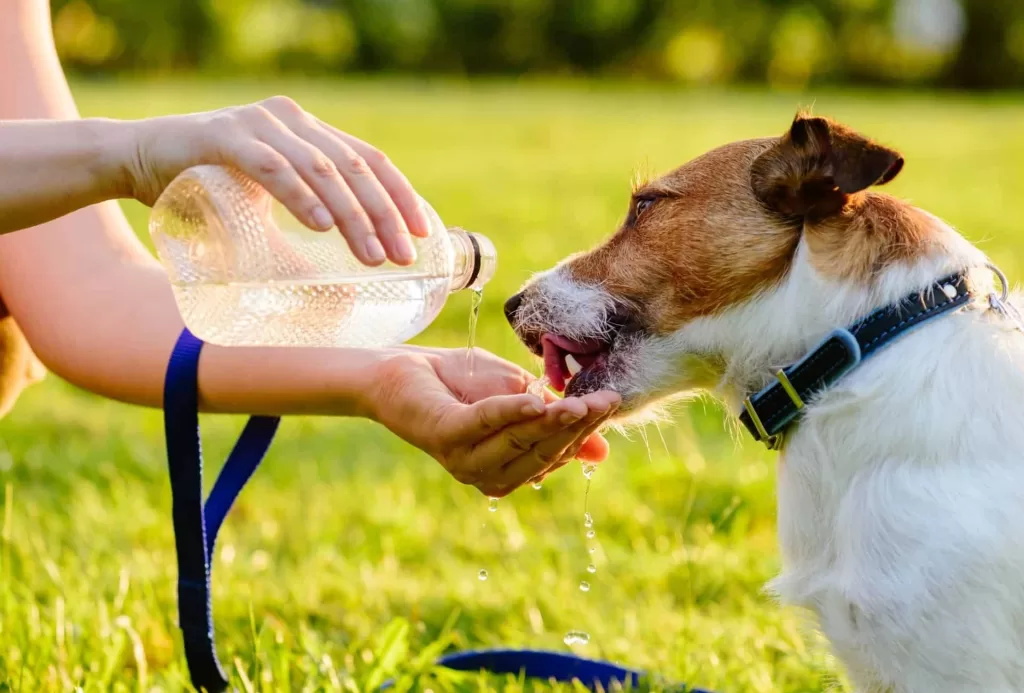As a responsible dog owner, you understand the importance of keeping your furry friend well-hydrated. Water is essential for a dog’s overall health, and dehydration can lead to serious health issues if left untreated.
Table of Contents
However, many dogs struggle to drink enough water, making it challenging for their owners to ensure they receive adequate hydration.
In this comprehensive guide, we will explore the reasons behind a dog’s reluctance to drink water, discuss the potential risks of dehydration, and provide effective strategies to trick your dog into drinking more water.
Also Read: Dehydration in Dogs: What Causes a Dog to Not Drink Water?
Understanding Dog Hydration and Dehydration Symptoms
Water is critical for a dog’s overall health, playing a robust role in maintaining their bodily functions, such as amendable body temperature, lubricating joints, and aiding digestion.
Dehydration can occur when a dog drops more water than they take in, which can be caused by various factors such as excessive exercise, illness, or environmental conditions. Common signs of dehydration in dogs include:
- Dry, sticky gums
- Sunken eyes
- Lethargy
- Decreased urine output
- Dark yellow or brown urine
- Increased heart rate
- Panting
If you suspect your dog is dehydrated, it is essential to seek immediate veterinary attention. Dehydration can lead to serious health complications if left untreated, so it is crucial to monitor your dog’s hydration status regularly.
How Much Drinking Water Does Your Dog Need Daily?

Most dogs should drink about 1/2 of a cup of water per kilogram of weight (about (about 0.3 to 0.4 cups) per pound).
Some dogs may need more or less, depending on factors such as age and activity level.
As temperature rises, it is important to stay hydrated. The same goes for your dog!
Although it may seem like they are always licking their chops, canines don’t produce enough saliva to properly hydrate themselves.
This means they rely on water alone to keep them cool and running at top speed.
If your dog is having trouble staying hydrated, you might want to consider investing in a pet water fountain, which can solve this problem and make drinking (and the whole process) more enjoyable for your pet.
Signs Your dog Is Dehydrated
Do you routinely check for these signs that your dog may be dehydrated?
Dry gums and tongue, dry nose, thick ropey saliva, lethargy, loss of skin elasticity, vomiting are all some of the symptoms of dehydration.
These symptoms are not only more common in dogs but also in humans.
Many people think their dog’s nose is always dry because it’s cold outside. That’s not the case, dehydration can be a significant cause of dry noses in dogs.
If your dog is exhibiting some of these symptoms, they might be dehydrated and you should take them to the vet to get some fluids.
Why Isn’t Your Dog Drinking Enough Water?
A dog’s water intake should account for 10-12% of their body weight per day. However, many dogs are not getting enough water to keep themselves hydrated.
If your dog is not drinking enough water or appears to be in any other way dehydrated, you should consult a veterinarian as soon as possible.
There are many reasons why your dog may not be drinking enough water.
- They don’t need to drink 8 or so glasses of water each day as humans do.
- Dogs are not human and have different needs than us.
- If your dog doesn’t drink enough water, it can lead to several issues which range from bladder stones to urinary tract infections.
How to Trick Your Dog into Drinking Water

Each dog has unique water needs, influenced by factors such as exercise echelons, age, and fundamental health circumstances. For example, dogs that engage in high-intensity exercise or live in hot climates may require more water to stay hydrated.
Dogs with primary health conditions, such as kidney disease or diabetes, may need to limit their water intake. It is essential to monitor your dog’s hydration prominence and adjust their water intake consequently.
Creative Strategies to Encourage Your Dog to Drink More Water
Providing Fresh and Clean Water
Ensure your dog has access to high-quality, uncontaminated water sources. Regularly clean their water bowls and consider using filtered water to reduce contaminants.
Exploring Different Types of Water Bowls
Introduce variety by using alternative bowl designs that may appeal to your dog’s preferences. Elevated bowls, wide bowls, and interactive bowls can all stimulate your dog’s interest in drinking water.
Adding Flavor to the Water
Use safe and enticing additives to enhance the taste of water for your dog. Diluted bone broth or frozen fruit cubes can make water more appealing.
Incorporating Wet Food with High Water Content
Choose moisture-rich diet options that can contribute to your dog’s overall hydration. Remember to maintain a balanced diet and consult with your veterinarian before making significant changes to your dog’s diet.
Leveraging the Power of Water Fountains
Many dogs are attracted to flowing water, which can serve as a source of stimulation. Water fountains can encourage your dog to drink more water, but ensure proper cleaning and maintenance to prevent bacterial growth.
Utilizing Positive Reinforcement Techniques
Encourage and reward your dog for drinking water through training methods. Praise and treats can help create a positive association with drinking water.
The Art of Gentle Persuasion
When your dog is reluctant to drink voluntarily, try gently trickling water into their mouth. This technique can be especially helpful for dogs with dental issues or those who are experiencing difficulty drinking due to age or illness.
Monitoring Your Dog’s Hydration Level and Seeking Veterinary Care
Regularly checking your dog’s hydration status is crucial to ensure they receive satisfactory water intake. Look for signs of dehydration, such as dry gums and recessed eyes, and consult with your veterinarian if you suspect your dog is dehydrated. Your veterinarian can assess your dog’s hydration level and provide appropriate medical interventions if needed.
Conclusion
In conclusion, studies have shown that oftentimes, dogs are not getting enough water because they don’t like the taste of it.
Here are some tips on how to get your dog to drink more water:
- Offer cold water
- Add ice cubes or frozen treats to the water bowl
- Feed them canned food
Keeping your dog well-hydrated is a critical aspect of responsible dog ownership. By understanding the reputation of hydration, recognizing the signs of dehydration, and applying effective strategies to encourage your dog to drink more water, you can ensure your furry friend receives the hydration they need to thrive.
Remember to monitor your dog’s hydration position regularly and seek veterinary overhaul if you suspect dehydration. With tolerance, determination, and the right approaches, you can trick your dog into drinking more water and keep them happy and healthy.
Stay Happy and Stay Healthy
References: https://naturalpetshq.com/how-to-get-my-dog-to-drink-water/

